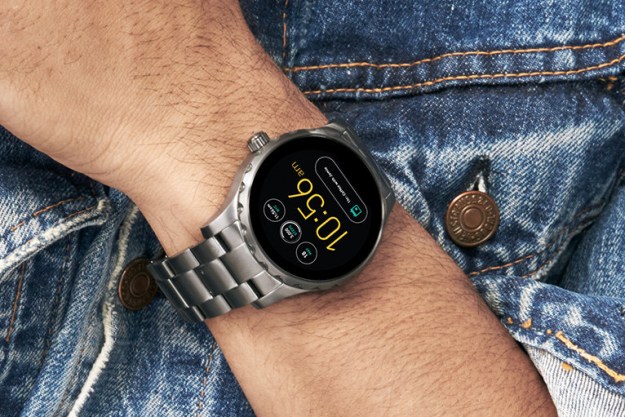Keeping your ears open while bike riding is safer than wearing earbuds. In fact, some states — California, Florida, and Rhode Island — made riding a bike with headphones illegal. The Coros Linx smart cycling helmet lets riders enjoy their tunes and stay in touch without blocking the sound of that semi-truck behind them. The Linx is on Kickstarter right now and has already received some feedback from cyclists.
The Linx allows its user to hear audio from a device and environmental sounds using bone-conduction tech. Positioned over the upper cheekbones, sound bypasses the ear canal and ear drum, allowing riders to hear the world around them. The helmet includes a mic so riders can make or take phone calls.
“Our focus on Linx was connecting you safely to your music, friends, bike mates, navigation data and ride stats.”
Of course, Coros Wearables went beyond simply adding a pair of bone-conduction headphones to a helmet. Within the Linx iOS and Android app, preferably while safely stopped, riders can create, share, and save routes — including via waypoints, where Google Maps struggles.
“A rider can set their route with multiple waypoints, ” Coros Wearables President Chuck Frizelle told Digital Trends. “If they want to take an indirect route — versus the most efficient, which is what Google maps gives first — that’s easy to do. Select all locations in your route using waypoints. Once riding, Linx provides voice navigation along the route. You can listen to music, and it will fade out while you get your next turn.”
The app will work like a basic tracker in the meantime, recording a ride history with distance, time, elevation, average, and max speed. With updates, the app will send ride data to key cycling apps like Strava and MapMyRide. But the best part is, the Linx gives auditory ride stats in real-time. It is like combining Google maps navigation and a top-of-the-line cycling computer.
“You pre-select how often you receive [audible data] based on time or miles,” Frizelle said. “Perhaps you want it every five miles or three minutes. You also pre-select what data you want — current speed, pace, distance, duration, calories, time of day … We are doing testing with riders to determine the optimal setup.”
Riders do not need to remove their hands from the bars to control the Linx. It comes with a smart remote to skip or pause tracks, take calls, control volume, and more without having to pull out a cell phone. Riders can also designate contacts for the emergency alert system to text in case of an accident.
Besides the smart tech, the Linx is built tough, with an IPX5 rating, and it comes with a year’s warranty and a replacement program in the event of a crash. In two sizes and three different colors, the Linx will launch with enough variety to flatter individual style. Although it is worth noting the shell design is decidedly for road cycling, there is nothing stopping anyone from wearing it. The usual ratchet fitting system is used for micro adjustments.
The Linx does not try to do everything; it focuses on mastering one area of cycling safety: connectivity. While it does have a ton of bells and whistles, this version will not have built-in lights as found on some other next-gen helmets. No doubt this keeps the weight down and helps the USB-chargeable battery last 10 hours. Frizelle said to backers on the Kickstarter page, “Our focus on Linx was connecting you safely to your music, friends, bike mates, navigation data and ride stats. Being the ultimate audio platform for cyclists, starting with safety and awareness and doing so with open-ear bone conduction.”
The Coros Linx helmet already more than tripled its $50,000 goal. After the campaign, Coros has a price of $200, but, as of publication, there are still $120 helmet backer rewards available. The campaign ends October 24, with the helmets set to ship in November. The early bird rewards are supposed to go out immediately following the end of the campaign in October. That is a short turnaround, but since the helmet has already been tested by countless riders, the funding is mainly for app connectivity and scaling production. Fingers are crossed for this one. Coros’ addition of bone-conduction and voice relay is a logical step for next-gen helmet design.




